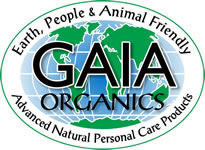|
|
 |
|
 |
| Given my recent exposé's of the pseudo organic and potentially toxic Naturebabe's ingredients, how can they justify the self-righteous safety claims made for their products given their infant and toddler target group? There should be an intuitive recognition that as vulnerable members of society, children merit special attention and protection with respect to environmental hazards. This position can be supported purely on philosophical and moral grounds, but there is also considerable scientific rationale for such concern. Children are not little adults. They have an exceptional vulnerability to both the acute and chronic effects of environmental chemical hazards and they are disproportionately susceptible by comparison with adults. There are many physiologic features that are unique to infants and these factors cause the absorption, distribution, metabolism and excretion of chemicals to be different to that in adults. Young bodies are not as capable of segregating toxins (i.e., keeping toxins from the target organs), and the target organs themselves may be more susceptible to the toxic action of chemical compounds. (International Programme on Chemical Safety, World Health Organization, Environmental Criteria 59, Principles for evaluating health risks from chemicals during infancy and early childhood: The need for a special approach, WHO, Geneva, 1986) Early developmental stages of an infant's organs, nervous system, and immune system, greater rates of cell division and lower body weight all increases susceptibility to chemical exposure. Immature organs and other developing biological systems are particularly vulnerable to toxicological disruption of anatomical, physiological and neurological and behavioral development. Body fat is low and plasma protein binding is reduced due to lower plasma albumin concentration, so plasma chemical levels may be higher than normal. The blood brain barrier is also less developed and hepatic toxin metabolizing enzymes are immature, leading to increased risk of chemical toxicity. Renal efficiency is low at birth and only develops in the 1st year. Infants have much greater susceptibility to neurotoxins because their nervous system is in a state of rapid growth up until about the 7th year. At birth, much of an infant's nerve system is not protected with a myelin sheath, the sheathing process progressively continuing up to the 7th year. If exposure begins in childhood, there is more of time both for exposure to be chronic and for adverse health effects to be manifest, including diseases with a long latency such as cancer. (Calabrese E, Age and susceptibility to toxic substances, John Wiley & Sons, NY, 1986); (Bearer C, Environ Health Perspect, (Supplement 6), 103: 7, 1995); (Au W, Intnl J Hygiene Environ Health, 205(6), 2002); (Wild K et al, Cancer Epidem Biomarkers Prev, 12, 1389, 2003); (Ginsberg G, Exploring child/adult differences in chemical metabolism and cancer susceptibility, 131st Annual Meeting of APHA, November 15-19, 2003); (Iyaniwura T, Risk World, 1 July, 2004) Skin surface area of an infants and toddlers are very large compared to their body weight, so their surface area to body weight is much greater than adults, increasing their potential dermal absorption of chemical compounds. A typical newborn weighs one-twentieth of the weight of an adult male, but the infant's surface area is one-eighth as great. Therefore, the total area of skin that could be exposed to a chemical is 2.5 times as great per unit of body weight in the infant as in the adult. Barrier thicknesses, regional blood flow, diffusional surface areas, surface-to-volume ratio and the temperature, hydration and pH of the skin all ensure that any chemical coming into contact with the skin is going increase overall exposure on a milligram per kilogram basis. At birth there is no stratum corneum to speak of and in the weeks that follow, organization of the skin as well as a stratum corneum is just developing. Absorption at this stage is very rapid due to greater capacitance and therefore more permeability in addition to just the thickness of the skin. Even in older children aged 1 to 6 years of age, there is higher skin blood flow than in adults and that can increase absorbance despite the fact that they then have normal skin thickness and hydration. (Paediatric Toxicology: Handbook of Poisoning in Children, Bates N et al, Eds, MacMillan Press, 1997); (Spielberg S, Characterizing Age Susceptibility, The Toxicology Forum - Summer Meeting, July 9-13, Aspen, CO, The Toxicology Forum, Wash, DC, 2001) (Plunkett L, Children and chemical safety and risk assessment, Forum IV, Chemical safety in a vulnerable world, Bangkok, Thailand, 1-7 Nov. 2003); (Environment, Health and Safety Committee, Harmful Effects if Chemicals on Children, Royal Society of Chemistry. 15 July 2004) |
|
||
| |
||
|
||
| |
||
|
Gaia is copyright © 2006 Gaia all rights
reserved Designed by Webs The Way |
||
|
Page Counter as of January 2008 |

